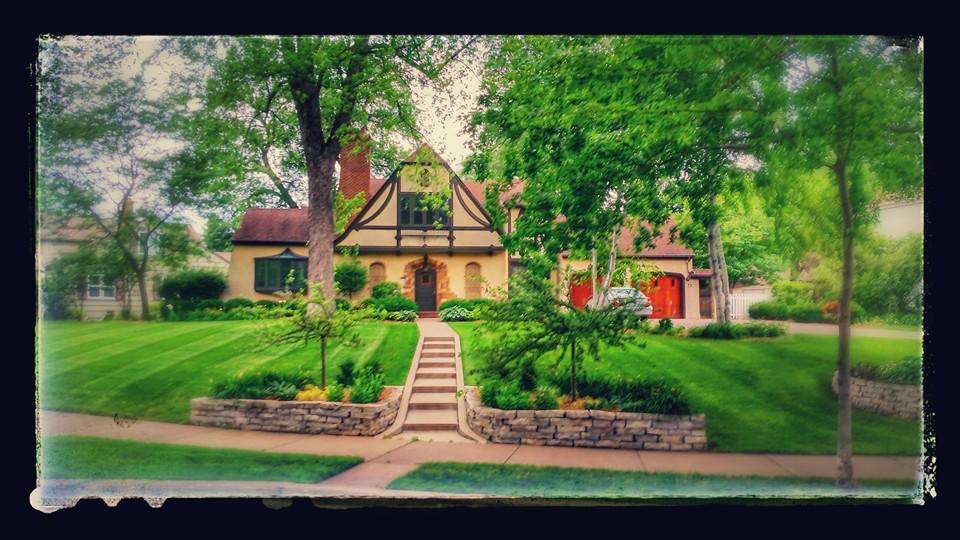Spring Lawn Maintenance for Summer Lawn Beauty
As the temperatures start to rise, now is the perfect time to prepare your lawn for the heat and humidity of a Minnesota summer. There are many things that can damage a lawn in the summer beyond just the weather. Outdoor activities, pets and other animals, and appearance of pests and weeds can all affect the health of the grass in your yard. Below are some tips and other advice from better-lawn-care.com that will help prepare and maintain your lawn for the warmest season:
- Take it easy on the soil
Don’t be in a hurry to start working in your yard. Let the soil thaw and dry out before beginning your spring lawn care chores. Foot traffic on wet soils will cause soil compaction problems. Even worse damage is caused by walking on lawns where the soil has thawed on top and is still frozen underneath, shearing roots in the frozen soil from the grass plants on top.
If you get too aggressive with raking, mowing, or aerating – any activity that will open up the turfgrass canopy exposing it to sunlight – you risk damaging fragile new growth and giving early germinating weeds the jump on your lawn grass. Wait until your grass is actively growing.
- Sharpen your lawn mower blades
Early spring is a good time to give your lawnmower and other power tools a tune up. Sharpen your lawnmower blades, change the oil, spark plug, and filters.
- Mow low to remove the dead tops
Once your lawn starts to green up, give it a good short cut to remove the dead grass tops. This will give the newly emerging leaves the sunlight they need and get them growing. Take care not to cut it too short – scalping and damaging the crowns of the plants. If you are a ‘grasscycler’ it’s OK to collect the clippings and excess debris this first mow of the year.
- Core aeration
Aerating benefits your lawn in several ways: reduces soil compaction, controls thatch, stimulates new root growth and improves water, air and nutrient filtration. Fall is the best time to aerate cool-season grasses and warm-season grasses should be aerated in the summer – when they are actively growing.
If you missed out on aerating your cool-season lawn last fall, spring is the second best time to get this done. Just be sure you aerate before you apply a crabgrass preventer. A good time to topdress with compost is right after you aerate, all soils benefit from adding organic matter.
- Overseed bare areas
Fall is the best time to seed cool-season grasses. However, there is a short ‘window of opportunity’ you can take advantage of in the spring. Grass seed will start to germinate when soil temperatures reach 50° F. Get your seeding done early enough so the new grass plants have time to develop strong roots before the summer stress period.
Overseeding works best when combined with aerating. Seeds will find their way into the aeration holes where they are protected, make good contact with the soil, and germinate quickly. Skip the crabgrass control if you overseed because it also works on grass seed. Plant warm-season grasses after the danger of frost has passed – late spring into early summer.
- Crabgrass control
Crabgrass prevention is a very important spring lawn care chore. Spring is the time to prevent crabgrass. If your lawn is dense and vigorous, consider taking chemical weed controls off your spring lawn care list. A dense and vigorous lawn will not allow weeds to invade…it’s the best weed control.
Crabgrass is a prolific seeder. If you had crabgrass last year, expect to see it again this year and consider using a preemergence herbicide. These crabgrass preventers stop weed seeds from germinating, so you will want to apply them before seeds germinate to get the best control. This will be when soil temperatures reach 50° F. Many gardeners plan to apply their preemergence around Easter. Blooming forsythia is another good indicator – when you see the yellow blooms, the soil temperature is 50° F.
Don’t worry if you are late applying preemergance – crabgrass and other weed seeds are germinating all season long and you’ll still get some control…better late than never. Preemergance herbicides will control a broad spectrum of weeds along with crabgrass and many products will give you three to six months control.
- Wait to Water
The last item on your spring lawn care list should be watering. It’s tempting to start watering in early spring, but there is usually plenty of rain to keep your lawn healthy. Wait to water until the weather gets warm and dry. It’s ok to let the grass show signs of drought stress – this will actually cause to roots to grow deep searching for water. Waiting until the weather turns hot and dry encourages deep rooting and that will prepare your lawn for the dog days of summer.
For all your lawn care needs, questions and concerns, contact the experts at Parkway Lawn Services. We have over 30 years of experience of serving customers in the Twin Cities. Just fill out our FREE ESTIMATE form or call us today at 612-869-5878!

